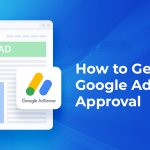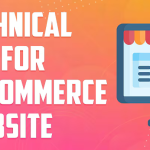What is SEO for E-commerce?
SEO for e-commerce is the process of optimizing your online store to appear higher in search engine results pages (SERPs). This method entails enhancing your website’s visibility, getting more organic traffic, and eventually increasing sales. The idea is to guarantee that your store appears when potential buyers search for the things you offer. SEO for e-commerce is essential because it allows your store to compete with others in a congested online marketplace while also reaching the correct audience.
Why Ecommerce SEO Matters?
Ecommerce SEO is incredibly important for several reasons:
- Increased Visibility: When your store ranks higher on search engines like Google, it’s easier for people to find you. This means more visitors and, potentially, more sales.
- Cost-Effective Marketing: Unlike paid ads, organic traffic through SEO doesn’t come with an ongoing cost. Once you’ve optimized your store, it can continue to bring in traffic without additional expenditure.
- Building Trust and Credibility: Higher rankings often suggest authority in your niche. Customers tend to trust sites that appear on the first page of search results.
- Better User Experience: SEO isn’t just about keywords; it also focuses on improving the overall user experience. This includes fast loading speeds, mobile optimization, and a well-organized site, all of which enhance the shopping experience.
The Best Ecommerce SEO Guide: Your Extensive Roadmap to Success
If you’re ready to boost your e-commerce store’s performance, here’s a roadmap to success:
1. Keyword Research
Start by identifying the keywords your target audience uses to find products similar to yours. Use tools like Google Keyword Planner, Ahrefs, or SEMrush to find high-traffic keywords with low competition. Remember to target long-tail keywords, which are specific phrases that potential customers may search for (e.g., “best eco-friendly yoga mats”).
2. Optimize Product Pages
Each product page should be optimized for both users and search engines. Here are some key optimization techniques:
- Title Tags and Meta Descriptions: Craft compelling and keyword-rich titles and descriptions that clearly define what the product is.
- High-Quality Product Images: Google loves fast-loading, high-quality images. Optimize your images by compressing them without sacrificing quality.
- Product Descriptions: Write detailed, unique product descriptions. Avoid duplicating content from other sites or manufacturers. Add important details like size, color, material, and features to make the content more valuable.
3. Improve Site Structure and Navigation
Make sure your e-commerce site is easy to navigate. A clear, logical structure helps both users and search engines understand your site.
- Category Pages: Organize products into clear categories and subcategories, helping users find what they’re looking for quickly. This also helps Google crawl your site more efficiently.
- Breadcrumb Navigation: Use breadcrumb links that allow users to easily trace their path back to previous pages or categories.
4. Mobile Optimization
More people are shopping on mobile devices than ever before. Your e-commerce website needs to be fully mobile-friendly to deliver a great experience to these customers. Google also uses mobile-first indexing, meaning it prioritizes the mobile version of your website for ranking.
5. Speed Optimization
A slow website can cause visitors to bounce. Use tools like Google PageSpeed Insights to check your site speed and optimize your images, reduce server response time, and minify JavaScript, CSS, and HTML files to enhance performance.
6. Build Quality Backlinks
Backlinks from reputable websites signal trustworthiness to Google. Focus on acquiring high-quality backlinks from blogs, industry influencers, and authoritative sources in your niche. Techniques like guest posting, influencer outreach, and partnerships can help you build these backlinks.
7. Product Reviews and User-Generated Content
Encourage customers to leave product reviews and share their experiences. User-generated content helps with social proof and can also improve SEO by adding fresh content to your product pages.
8. Use Structured Data (Schema Markup)
Schema markup helps search engines understand your content better. Adding product schema markup can improve how your products appear in search results, potentially displaying prices, availability, and reviews directly in the search snippets.
9. Content Marketing
Content marketing is a great way to attract organic traffic. Start a blog or create guides and product how-tos that target common customer questions. This not only helps with SEO but also establishes your store as an authority in your niche.
Wrapping Up: How to Create Your E-commerce SEO Strategy
Developing an efficient e-commerce SEO strategy is a long-term process that requires continuous optimization. Begin by conducting extensive keyword research, making sure that your product pages are optimized for both search engines and users. To increase the rankings of your online store, prioritize site structure, speed, mobile optimization, and the creation of high-quality backlinks. Always remember that a strong user experience, along with good SEO tactics, can generate more organic traffic to your e-commerce store, resulting in more sales and business success.










